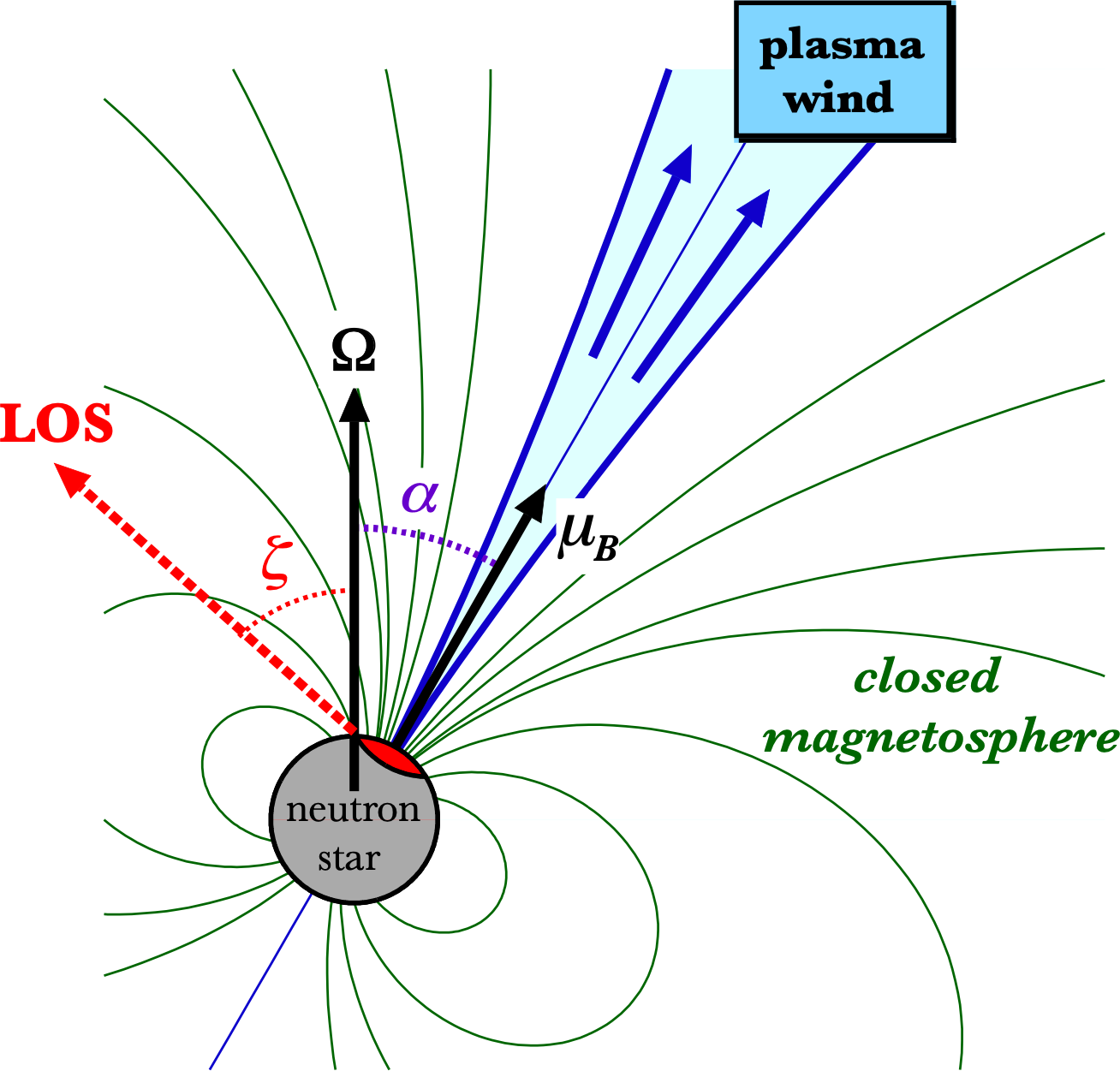NICER / ISS Science Nugget
for November 24, 2022
A new link between neutron star spin and emission events
Even among neutron stars - the strongest known magnets in the universe - the so-called "magnetars" are exceptional, with magnetic field strengths thousands of times higher than typical neutron stars (and up to 1015 times stronger than the Earth's magnetic field). These extreme magnetic configurations power unique phenomena including millisecond-duration bursts at radio and X-ray wavelengths, persistent pulsations from the heated surface (X-ray) and magnetospheric (both radio and X-ray) processes, and sudden spin changes known as "glitches." Such hiccups in a neutron star's spin rate have been observed to both speed up and slow down rotation, at different times and in different stars, but spin-down glitches are extremely rare and had previously been reliably detected only in one object.
In 2020, the magnetar SGR 1935+2154 exhibited rare and never-seen-before behavior in several ways, including a single short-duration radio burst of enormous brightness consistent with the many (and still mysterious) Fast Radio Bursts seen from magnetars in other, distant galaxies, and a "storm" of millisecond-duration X-ray bursts. New analyses of NICER X-ray data, in conjunction with measurements from ESA's XMM-Newton X-ray telescope and the CHIME (Canada) and FAST (China) ground-based radio telescopes now extend this list to include a spin-down glitch (the first seen from SGR 1935), a month-long episode of persistent radio pulsations, and three additional FRB-like radio bursts. Intriguingly, these radio phenomena followed the spin glitch by approximately three days, but without any notable changes to the star's X-ray emission properties (brightness, spectrum, and pulsations). The rarity of these events taken individually suggests that this near-simultaneity is not a coincidence, and indeed a new theoretical model links them in a plausible way.
In a paper recently accepted for peer-reviewed publication in the journal Nature Astronomy, G. Younes (NASA GSFC) and collaborators describe the X-ray and radio measurements, and hypothesize that the rotational glitch enabled the bursting and persistent radio emissions by temporarily altering the star's magnetic field configuration. Because spin glitches are thought to arise from "starquakes" in the outer layers of the neutron star, sudden movement and frictions in the stellar crust result in the ejection of a substantial amount (perhaps one 10-billionth the mass of the star) of material, a highly charged plasma that pushes its way out along the magnetic field lines. While these lines are normally twisted and block the flow of electrons and other particles, the influx of matter straightens the field above the magnetic polar cap and clears the way for a narrow, radio-emitting flow. The large-scale magnetic configuration, which is primarily responsible for X-ray emissions, does not change in this model, explaining the constancy of the X-ray pulsations and their spectrum.
Continued theoretical work and monitoring of SGR 1935 with NICER and its partner telescopes will test the model linking glitches to radio emissions, further elucidating the strange and exceptional behaviors of magnetars.


Figure:
(Left) Spin and X-ray properties of magnetar SGR 1935+2154 in the days before and after an apparent "spin-down glitch" on October 5, 2020. Panel (a) shows the neutron star's rotation phase as measured with NICER (black points) and ESA's XMM-Newton telescope (red points), assuming a spin model derived from the post-glitch data such that all points are consistent with zero phase; the three XMM-Newton measurements at far left are not consistent with this model and provide strong evidence for the glitch at time zero in this figure. The long-dashed line captures both the pre- and post-glitch model behavior. The vertical dotted line corresponds to the time of three rapid radio bursts detected by the CHIME telescope, and the cyan horizontal bar indicates the interval during which the FAST telescope detected persistent radio pulsations with the magnetar's known 3.25 sec spin period. Panel (b) similarly shows "residuals" (observed minus expected) pulse phase given the full model in panel (a). Panel (c) shows the constancy of the fraction of X-rays emitted by SGR 1935 that are found to be pulsed, averaging approximately 8%. Panel (d) demonstrates that the X-ray brightness of SGR 1935 did not change appreciably before or after the glitch, nor on either side of the radio bursts detected with CHIME. Figure from Younes et al. 2022 (Nature Astronomy, in press).
(Right) Sketch of the magnetar's field geometry and hypothesized plasma wind responsible for the radio bursts and persistent emission seen a few days after the spin glitch. Indicated angles are α between the neutron star's magnetic (μB) and rotation (Ω) axes, and ζ between Ω and the observer's line of sight (LOS, which is fixed while the μB vector rotates about Ω). The hot magnetic polar cap that produces the observed thermal X-ray pulsations is shown in red, closed (approximately dipolar) magnetic field lines are shown in green, and "open" field lines are shown in blue; the latter are thought to be highly twisted under normal circumstances, suppressing particle flows and radio emission, but a sudden strong injection of plasma from the surface during a glitch "combed" the open field lines to a nearly radial configuration, clearing the way for radio emission. Figure from Younes et al. 2022 (Nature Astronomy, in press).
<< Previous
Main Index
Next >>